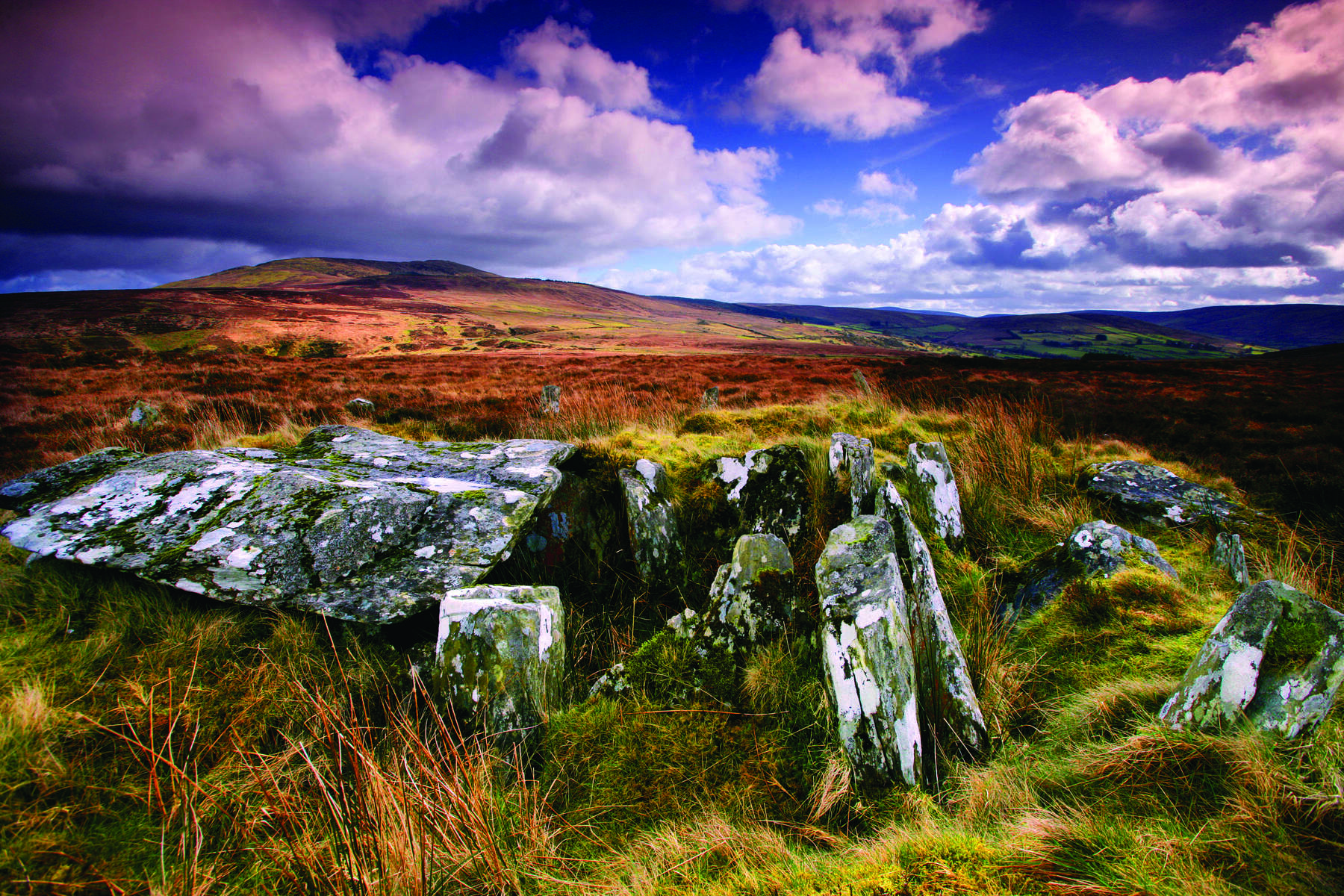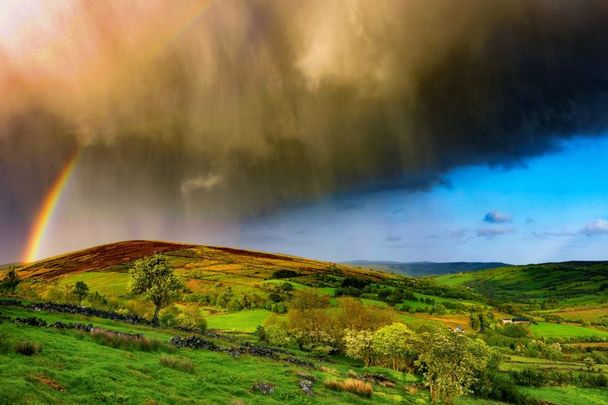Glenelly Valley is the longest valley in the Sperrin Mountains in County Tyrone and is regarded as one of Northern Ireland’s most idyllic and dramatic landscapes.
Day-trippers and tourists alike visit for many reasons. From marveling at the glacial environment millions of years in the making to cycling through the dramatic Barnes or taking in ancient burial sites and monuments – this area has something for everyone.
The valley is located in the Sperrin Mountains one of the largest upload areas in Ireland. The range stretches from Tyrone to Derry and from Strabane (in the south) to Limavady (in the north). The Mountains are a designated Area of Outstanding Natural Beauty and are also known due to the distinctive glaciated landscape.
The nearest town to the spectacular Glenelly Valley is Plumbridge, a crossroads village, on the banks of Glenelly River. There are plenty of lovely guest houses and rental properties in the area which cater to the large walking and tourist influx the Sperrin Mountain area has during the summer months.
Here are just some of the amazing attractions in the area:
Corrick Abbey
It is believed the first religious site was established on this site c. 560 when St. Columba founded a monastery and center of learning. The ruins on the site now are those of the Franciscan Friary established in the 15th century.

Corrick Abbey in County Tyrone
Clogherny Wedge Tomb
This is a Bronze Age wedge tomb that is well preserved. It is located in an extensive area of blanket peat near the Butterlope Glen, four miles north of Plumbridge. The tomb is surrounded by an elegant stone circle of 11 tall schist stones. Wedge tombs are generally considered to span the late Neolithic and early Bronze Ages and this site may have been built around 2000 BC.
Glenelly Presbyterian Church
The church was built in 1839 from stone drawn from Eden Hill. It replaced a former thatched meeting house on the site.
Raths of the Valley
The Glenelly Valley is renowned for its ancient raths. These are strong circular earthen walls forming an enclosure and serving as a fort and residence for a tribal chief. These early Christian era farmsteads can be seen along the hillsides on either side of the river.
Read more
St Patrick’s Church
Erected in 1784 in upper Badoney on the site of a much earlier pre-reformation church, St. Patrick’s Church is believed to have been founded by the Patron Saint of Ireland himself. The graveyard contains many interesting stones, including that of Professor James MacCullagh, a prominent 19th-century mathematician and physicist.
Glenroan Portal Tomb
This tomb is also known as Dermot and Graina’s Bed. It dates back to 3000BC. The single-chambered, megalithic tomb rests on a fallen position across two portal stones. It is one of many in the region.
Cranagh Village
Cranagh is located about seven miles from Plumbridge. The small town has a population of 66 people, according to the 2001 Census. The town takes its name from the Irish meaning “the crannog.”
Goles Stone Row
The Goles Stone Row is 11 individual upright stones, oriented north to south and arranged in a straight line, some 16 meters long. The stones date from the Bronze Age and are believed to have been associated with rituals to do with the rising moon.
Originally published in 2016. Updated in July 2023.

Are you planning a vacation in Ireland? Looking for advice or want to share some great memories? Join our Irish travel Facebook group.




Comments